Rising Trend of Glass Façade in India Glass with time has risen to be one of the most important and primary construction components in the building industry. In a country like India, which consists of hot and humid climate zones and where thick brick walls and concrete structures are better at providing insulation, thus lessening the cooling loads of the buildings, in recent times, are using more and more glass for building façades. The increasing demand for Glass façade lies in the fact that glass imparts higher aesthetic value to a building. All high rise buildings in the metro cities are glazed with high quality Glass façades. The other reason for this trend is the fact that apart from the sophisticated exterior, glass façades make the buildings lighter and reduces the weight on the foundation. Also, glass provides natural day lighting and unobstructed views of the exterior giving the building...
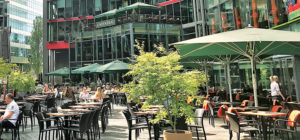
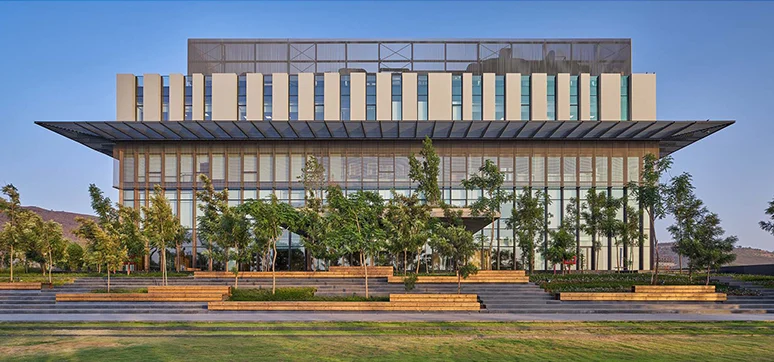
Market for Architectural Glass Used in Façade and Fenestration Industry
What is the size of the present architectural glass market globally and in India? [caption id="attachment_56363" align="alignright" width="200"] SUHEL KACHWALA, Managing Director, FG Glass[/caption] Suhel Kachwala: The global market for performance glass used in the façade and fenestration industry is expected to grow by a good value and roughly the market is projected to grow at a CAGR of 4.8% from 2023 to 2032. Tariq Kachwala: The growth of the Indian architectural glass market is estimated to be around CAGR 7.5% for 2023-2027. What are the driving factors of the architectural glass industry? Suhel Kachwala: The increasing demand for energy-efficient buildings is a major driver of the growth of the performance glass market. Performance glass can help to reduce energy consumption by up to 50% by controlling heat gain and loss. [caption id="attachment_56365" align="alignleft" width="365"] Lupin Research & Development Centre, Pune[/caption] Additionally, performance glass can improve the thermal comfort of...
Posted on: 07 Feb 2024
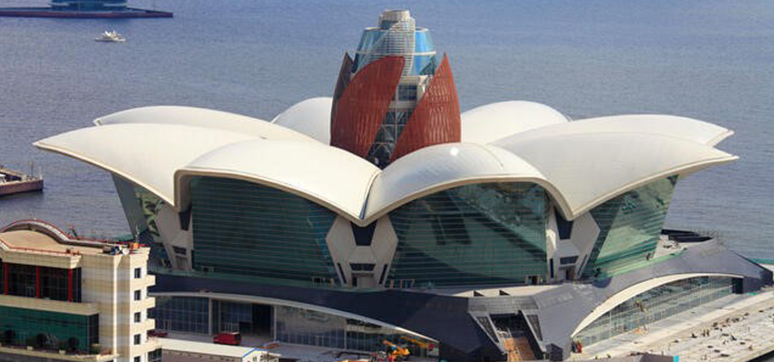
Shaping the Future of Architecture: The Transformative Role of Glass Façades
Glass has become a transformative material in modern architecture, offering a multitude of advantages that go far beyond its aesthetic appeal. As a favored façade material, it allows for sleek and versatile designs, maximizes natural light penetration, and fosters a strong connection with the surrounding environment. Moreover, innovations like low-emissivity coatings have significantly contributed to the energy efficiency of glass, making it a sustainable choice for modern buildings. In regions with abundant sunlight, such as the Gulf, glass façades play a crucial role in optimizing energy savings by reducing the need for artificial lighting and cooling. [caption id="attachment_55528" align="alignright" width="300"] Image Courtesy - Future Architectural Glass[/caption] The choice of glass type and coatings also plays a pivotal role in determining a building’s energy efficiency and thermal performance. Factors like double or triple glazing, Low-E coatings, and tinted or reflective glass impact insulation and solar control, make it essential to consider...
Posted on: 18 Dec 2023
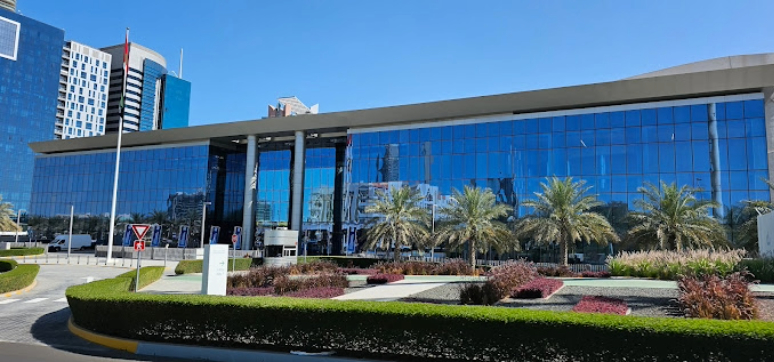
Emirates Glass: Pioneering Excellence in Architectural Glass Manufacturing and Innovation
Can you provide an overview of Emirates Glass LLC’s core products and services, and how it contributes to the glass industry in the Middle East and globally? Our product range includes more than 400 different and in-house developed performance coatings, from hard and solar control coatings to low-emissivity single and double silver, selective double silver, coatings across the entire colour spectrum to meet even the most challenging requirements we receive from consultants and architects in terms of performance and aesthetics. Emirates Glass also provides a wide array of double or triple-glazed insulating glass units, safety, bullet-resistant and laminated glass, non-rectangular and bent elements – or a combination of any of the above. Some more special products include glazing units with captured or suspended elements for aesthetic or performance-enhancing applications such as honeycomb diffusers, metal and synthetic meshes, or mashrabiya inserts to reflect our local heritage and ability to integrate traditional...
Posted on: 12 Dec 2023
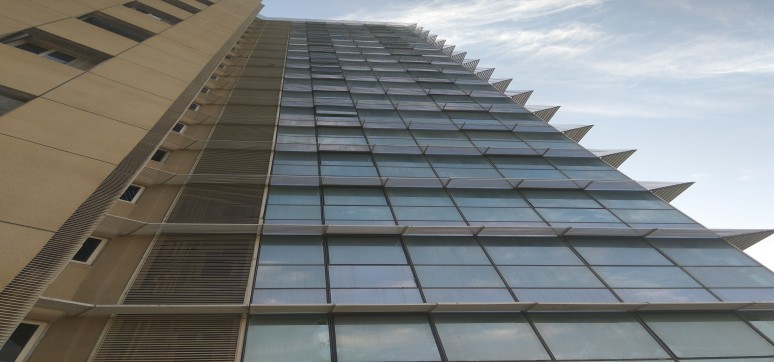
Glass Façades for High-Rise Buildings
The word ‘Façade’ means ‘Face’ in French, and a building’s façade is actually the front of a building and its face. Glass walls on the exterior of buildings are widely used to improve the beauty, keep the interior temperature in check, and allow enough natural light to enter which gave rise to the increasing use of glass. Some of the advantages of using glass in high-rise buildings: Efficiency: The glass façade on the exterior of the building allows an optimum level of natural light to enter, which reduces the cost of lighting. Safety & Maintenance: The key factors to consider while designing a façade are safety, longevity, and maintenance. Glass has a smooth glossy surface, so it is dustproof and can be cleaned efficiently. Unlike other materials, it is easy to maintain. Strength & Weather Resistance: The materials used in glass façades are extremely strong and durable. They are designed...
Posted on: 07 Dec 2023
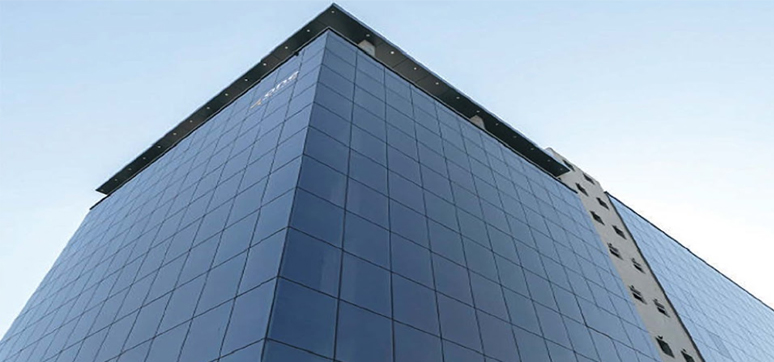
Gujarat Guardian Unveils Guardian® SunGuard® Solar Plus Glass
Gujarat Guardian Limited, a frontrunner in the glass solutions sector, has unveiled a groundbreaking expansion to its Solar Plus glass series under the esteemed Guardian®️ SunGuard®️ brand. This revolutionary monolithic glass solution introduces an array of benefits, including exceptional solar control and low emissivity properties. The launch of Guardian®️ SunGuard®️ Solar Plus marks a significant advancement in solar control and energy efficiency. Noteworthy among its features is the glass series’ remarkable ability to seamlessly balance visible light transmission, solar heat control, and low-emissivity characteristics all within a single glass configuration. This innovation ensures that the interiors of buildings are immersed in natural light, creating an inviting and comfortable atmosphere while simultaneously reducing heat buildup and the excessive need for air conditioning. By achieving this delicate equilibrium, the Solar Plus glass significantly enhances the energy efficiency of structures, effectively reducing dependence on artificial lighting and cooling systems, and contributing to India’s...
Posted on: 28 Sep 2023

“Ensure Responsible & Conscious Use of Glass & Make It an End-User-Centric-Design”
What are the advantages of glass façades in high-rise buildings? Aesthetics: Glass façades are visually appealing and can create a clean and sleek look for high-rise buildings. They can also be used to create unique shapes and structures that would not be possible with traditional building materials. The transparent nature of glass allows a building’s interior to be visible from the outside, which can add to the aesthetic appeal of the building. Natural light: Glass façades allow daylight to enter the building, making it more airy and bright, reducing the need for artificial lighting during the day. This can result in energy savings and a more pleasant indoor environment for building occupants, which is the need of the hour. This can help to reduce energy costs, improving the overall mood of people working or living in the building. [caption id="attachment_51891" align="alignleft" width="500"] Prestige Minsk Square[/caption] Views: High-rise buildings with glass...
Posted on: 03 Jul 2023
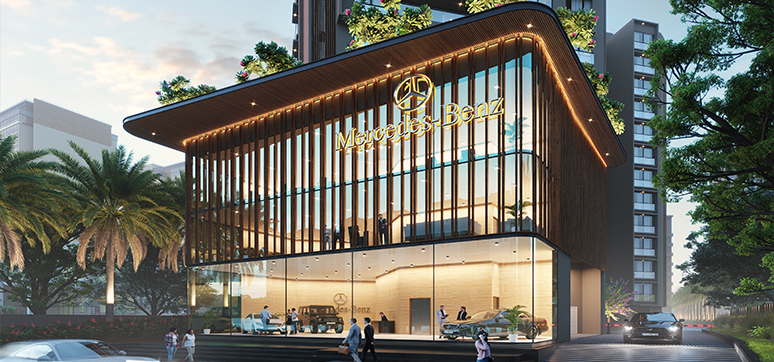
Designing Glass Façade to Meet Specific Performance Requirements
• Identify the specific performance requirements: The design team can do this by reviewing the project requirements, building codes, and other relevant standards. • Select the appropriate glass type: Based on the performance requirements, the appropriate glass type like Low-E glass, laminated glass, or tinted glass is selected, which can be used for thermal insulation, laminated glass for sound reduction, and tinted glass for solar control. • Determine the glass thickness: Based on the performance requirement, the thickness is decided. Thicker glass can be used for sound reduction while thinner glass can be used for thermal insulation. • Incorporate insulation materials: Insulation materials such as argon gas in the glass units enhance thermal insulation. • Design shading systems: Louvers, vertical fins, and brise soleil can reduce solar heat gain. • Optimise the glass façade design: This can be done considering the orientation of the building, the surrounding environment, and the...
Posted on: 28 Jun 2023

“The Versatility of Glass Façades is Unmatched”
The use of glass in the construction industry was first seen around the early 1800s during the rise of interest in greenhouses and conservatories. At this moment in time, glass was considered a luxury item as it was not entirely available to the general public due to its high costs. However, the cost significantly reduced during the latter stages of the industrial revolution around the mid-1800s. Crystal Palace, built in 1851 by Joseph Paxton marked a new era in the use of glass. The advantages of the use of glass in high-rise buildings are plenty. It is lightweight, allows for larger openings increasing the vision towards the outside, it contributes to natural light filtering the indoor spaces, glass has the ability to keep out solar ingress and also contributes to ventilation channeling it through the indoor spaces. Types of Glass Facades There are many types of glass façade systems such...
Posted on: 08 Jun 2023

What Makes Glass a Class Apart
The use of glass in building design has become increasingly popular over the years for the unparalleled benefits it offers. Today, architects and designers consider glass as the go-to material, not only for the aesthetics it delivers but also for the performance it assures. It is the only material that blends the exteriors with the interiors, seamlessly bringing the outdoors inside. In this article, we will look at the ways and means by which glass adds value to any building, be it commercial or residential. AESTHETICS Glass can be used to create a range of visual effects in building design. When it comes to facades, unlike other building materials, glass scores high on aesthetics by adding colour and character to a building’s façade. As a façade cladding material, glass provides an unobstructed view of the surrounding environment, while tinted, frosted or textured glass can offer privacy and add value in...
Posted on: 06 Jun 2023

The Role of Glass in Today’s Sustainable Buildings
Glass is primarily or fundamentally used for seeing through the glass as well as for capturing natural light. Glass is chosen by designers because of its better aesthetics as well as to see through. The goal of fully Highrise buildings became a glittering reality during the era of contemporary architecture and the international style, producing stunning facades, permitting interior and exterior connection, and honouring fantastic vistas. Apart from adding beauty, it offers several other benefits. The structural load is reduced as a result of the glass’ lightweight. Due to its transparency, it lets in the most natural light possible, which reduces the need for power. Glass that meets the right specifications for reflection and thermal insulation will undoubtedly increase efficiency. Last but not least, glass roofs and facades offer unhindered vistas and contribute to the building envelope being interactive. However, in the modern era, due to stricter construction codes and...
Posted on: 16 Mar 2023

Trends in Glass & Glazing for the Building Envelope
Performance Requirements in the UK Market – The Challenge of Our Time We live in unprecedented times. Again. There have been many challenges in our industries past, with revolutions and technology being used to bring us to the modern façade we see today; the implementation of technology by Bessinger (and then latterly by Pilkington) to give us float glass; the introduction of Double Glazing (DGU’s) by Haven in 1930s via the “Thermopane”; the collaboration of Pilkington and Flachglas Group giving us the first commercial Low-E glazing coatings to name but a few. These leaps in technology solved the issues of their time; however, we once again stand on the precipice of the next essential evolution in the UK façade industry. This need for evolution - or even revolution - is due to a perfect storm for a revolution due to the perfect storm in terms of technical requirements; new research...
Posted on: 01 Feb 2023
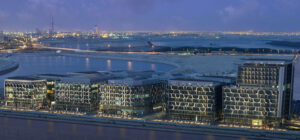
An entrepreneur who wants to build a sustainable company in the glass industry must formulate a bolder and more explicit strategy
Please brief our readers about the journey of Emirates Glass in the Middle East? [caption id="attachment_44667" align="alignright" width="352"] Dubai Design District - Elite Blue 40 T[/caption] Emirates Glass was established in 1997 by Khalid Bin Kalban to become the leading provider of energy-efficient architectural glass in the Middle East. Since its inception the company has been an integral part of Dubai’s growth and evolution, having supplied glazing and expertise for many of the most iconic buildings across the city. However, Emirates Glass has also expanded its international presence and we are proud to have supplied our solutions to GCC countries such as Saudi Arabia, Oman, and Kuwait, but also to Azerbaijan, Turkey, India, Sri Lanka, Pakistan, Bangladesh, East, and South Africa and even Canada. Together with 80 different coatings, from hard and solar control coatings to low-emissivity single and double silver coatings across the entire color spectrum, Emirates Glass can...
Posted on: 15 Nov 2021
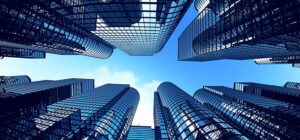
Innovative Glass & Glazing Solutions for Façades & Fenestrations
Glass has made its way as a wonder material and deep inroads in the building industry. It has revamped itself hugely and the industry has broken the conventional fears and norms of breakage, safety, security and several other factors and addressed them head-on. The technological innovations in glass and glazing have helped and rewarded the industry with substantial growth in volumes and adding diversity and versatility in usage. Façade glazing contributes to the aesthetics of a building and reduces the visual and physical weight of a building. It presents design opportunities to architects, where they can explore different geometric configurations and shapes of glass with customised module design and its assembly. Architects are still exploring its creative applications. [caption id="attachment_43466" align="alignnone" width="774"] Blu by BES Consultants[/caption] Window/Façade Glazing - Why is it Important? [caption id="attachment_43467" align="alignleft" width="150"] Dwayne Sloan Director Principal Engineering, Built Environment, UL[/caption] The building façade refers to...
Posted on: 20 Jul 2021
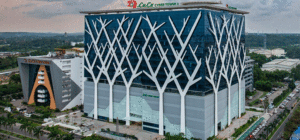
“Smart Glasses are a Revolution in the Glazing Industry”
What is a window / facade glazing and why is it important? Windows and façades are the elements of the building to communicate with the surroundings. It is exactly like the skin of the human body. This will play a bigger role in accepting or rejecting the various aspects of the environment. [caption id="attachment_43402" align="alignright" width="500"] Sattva South Gate Project, Electronic City, Bangalore[/caption] What is the difference between tempered glass, wired glass and laminated glass and their use in projects? Keeping security in mind, we can use the above glasses for the façade which will cover the safety aspects also. Toughened glass will ensure the glass will not break into bigger pieces to hurt people. The wired glass will keep the broken glass pieces in their place after breakage. Laminated glass which is considered superior to the above categories will give full safety for the façade even after the glass...
Posted on: 12 Jul 2021
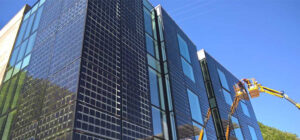
Photovoltaic Glass: Solutions to Make the World a Greener Place
Photovoltaic Glass Building-integrated photovoltaics (BIPV) are photovoltaic materials that are used to replace conventional building materials in parts of the building envelope such as the roof, skylights, or façades. They are increasingly being incorporated into the construction of new buildings as a principal or ancillary source of electrical power, although existing buildings may be retrofitted with similar technology. The advantage of integrated photovoltaics over more common non-integrated systems is that the initial cost can be offset by reducing the amount spent on building materials and labour that would normally be used to construct the part of the building that the BIPV modules replace. These advantages make BIPV one of the fastest-growing segments of the photovoltaic industry. The term building applied photovoltaics (BAPV) is sometimes used to refer to photovoltaics that is a retrofit – integrated into the building after construction is complete. Most building-integrated installations are BAPV. Some manufacturers and...
Posted on: 04 Aug 2020

